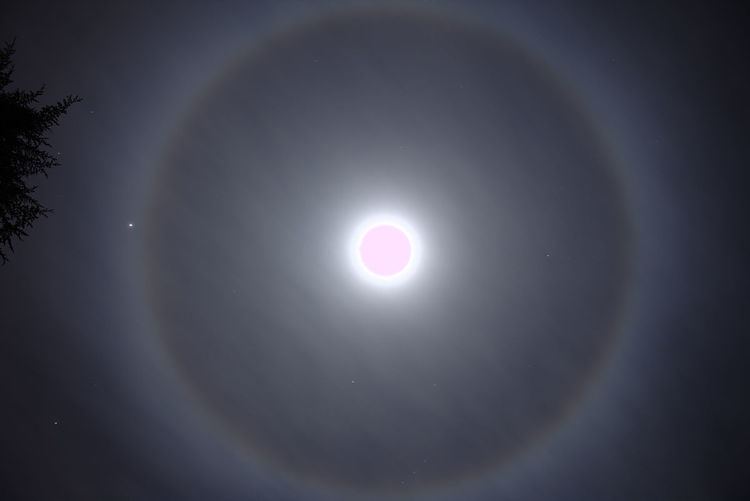Optical phenomena are any observable events that result from the interaction of light and matter. See also list of optical topics and optics. A mirage is an example of an optical phenomenon.
Common optical phenomena are often due to the interaction of light from the sun or moon with the atmosphere, clouds, water, dust, and other particulates. One common example is the rainbow, when light from the sun is reflected and refracted by water droplets. Some, such as the green ray, are so rare they are sometimes thought to be mythical. Others, such as Fata Morganas, are commonplace in favored locations.
Other phenomena are simply interesting aspects of optics, or optical effects. For instance, the colors generated by a prism are often shown in classrooms.
Optical phenomena include those arising from the optical properties of the atmosphere; the rest of nature (other phenomena); of objects, whether natural or human-made (optical effects); and of our eyes (Entoptic phenomena). Also listed here are unexplained phenomena that could have an optical explanation and "optical illusions" for which optical explanations have been excluded.
There are many phenomena that result from either the particle or the wave nature of light. Some are quite subtle and observable only by precise measurement using scientific instruments. One famous observation is of the bending of light from a star by the Sun observed during a solar eclipse. This demonstrates that space is curved, as the theory of relativity predicts.
AfterglowAirglowAlexander's band, the dark region between the two bows of a double rainbow.AlpenglowAnticrepuscular raysAnthelionAuroral light (northern and southern lights, aurora borealis and aurora australis)Belt of VenusCircumhorizontal arcCircumzenithal arcCloud iridescenceCrepuscular raysEarth's shadowEarthquake lightsGlories (also known as Brocken's Specter or Specter of the Brocken)Green flashHalos, of Sun or Moon, including sun dogsHeiligenschein or halo effect, partly caused by the opposition effectLight pillarMirages (including Fata Morgana)RainbowsShadow setSun dogsTyndall effectDichromatismGegenscheinIridescenceOpposition effectSylvanshineZodiacal lightAsterism, star gems such as star sapphire or star rubyAura, a phenomenon in which gas or dust surrounding an object luminesces or reflects light from the objectAventurescence, also called the Schiller effect, spangled gems such as aventurine quartz and sunstoneBaily's beads, grains of sunlight visible in total solar eclipses.camera obscuraCathodoluminescenceCausticsChatoyancy, cat's eye gems such as chrysoberyl cat's eye or aquamarine cat's eyeChromatic polarizationDiffraction, the apparent bending and spreading of light waves when they meet an obstructionDispersionDouble refraction or birefringence of calcite and other mineralsDouble-slit experimentElectroluminescenceEvanescent waveFluorescence, also called luminescence or photoluminescenceMie scattering (Why clouds are white)Metamerism as of alexandriteMoiré patternNewton's ringsPhosphorescencePleochroism gems or crystals, which seem "many-colored"Polarized light-related phenomena such as double refraction, or Haidinger's brushRayleigh scattering (Why the sky is blue, sunsets are red, and associated phenomena)ReflectionRefractionSonoluminescenceShrimpoluminescenceSynchrotron radiationThe separation of light into colors by a prismTriboluminescenceThomson scatteringTotal internal reflectionTwisted lightUmov effectZeeman effectThe ability of light to travel through space or through a vacuum.Diffraction of light through the eyelashesHaidinger's brushMonocular diplopia (or polyplopia) from reflections at boundaries between the various ocular mediaPhosphenes from stimulation other than by light (e.g., mechanical, electrical) of the rod cells and cones of the eye or of other neurons of the visual systemPurkinje images.The unusually large size of the Moon as it rises and sets, the moon illusionThe shape of the sky, the sky bowlSome phenomena are yet to be conclusively explained and may possibly be some form of optical phenomena. Some consider many of these "mysteries" to simply be local tourist attractions that are not worthy of thorough investigation.
Marfa lightsHessdalen lightsMin Min lightsLight of SaratogaNaga fireballs
